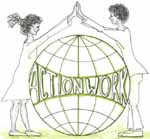|
The Orang Asli are regarded as being the original inhabitants of Malaysia and have been given the title 'Bumiputera' (childrem of the earth), along with the Malays (55% of the population). This title has not been offered to the Chinese and Tamil people (33% of the population)that live in Malaysia.
The Orang Asli have been categorised linguisticaly into three Aslian groups (Wurm and Hattori 1983; Benjamin 1986):
- Northern Aslian: Kensiu, Chewong, Batek, Kentaq Bong, Jehai, Medrique and mintil (Malaysia) and Tonga' and Mos speakers from Southern Thailand
- Central Aslian: Temiar, Semai, Jah Hut, Jengjeng, Lanoh, Sabum and Semnam.
- Southern Aslian: Ma'Betisek, Semelai, Temoq and Semaq Beri.
- The remaining Orang Asli; Temuan, Jakun, Orang Kanaq and Orang Selitar speak Malay dialects.
The other categories that are used for the Orang Asli are based on ethnic and cultural criteria (Roseman 18: 1991):
- Senoi: including the Temiar and Semai
- Semang: include the Lanoh, Semnan and Sabum and all the Northern Aslian speakers except the Chewong.
- Aboriginal Malays: including the ; Temuan, Jakun, Orang Kanaq and Orang Selitar.
Each group Orang Asli group has its own language, history and customs that are distinct from each other. It is popularly believed that the first Orang Asli may have come to Malaysia about 50,000 years ago through population movements from India, Sri Lanka and South China. (Roseman 1991: 18- 19).
The Malays(who make up 55% of the countries population) are not decendants of the Orang Asli but came to the peninsula about 3-4000 years ago. But it was not until relatively recently that the Orang Asli started being displaced from their homes and traditional land by government sponsored and Western backed development including: logging, dams, plantations and golf courses. Their resources have been destroyed and inadequate compensation (if any) has been supplied such as regrouping them into 'schemes' with inadequate land or aid for growing food let alone any cash crops.
Today the Orang Asli make up less that 1% of the total population in Malaysia.
Many scholars have researched and written about the Orang Asli, including some Orang Asli themselves. If you would like to read more about them then please see the publications page.
Book reccomendation: written by a non Orang Asli about an Orang Asli group, by Robert Knox Dentan 'The Semai - A Nonviolent People of Malaya', 1962: Holte, Rhinhart and Winston.
More: Colin Nicholas writes about the Orang Asli
|







